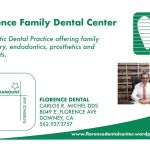Teeth Whitening Treatments at a Dentist: What You Need to Know
- Why Teeth Whitening Is Important
- Types of Teeth Whitening Treatments
- Benefits of Professional Teeth Whitening
- What to Expect During a Teeth Whitening Treatment
- How to Maintain Your Whiter Teeth After Treatment
- Explore Teeth Whitening Products for Better Results
1. Why Teeth Whitening Is Important
A bright, white smile is more than just aesthetically pleasing—it can boost your confidence and leave a lasting impression. Over time, teeth can become stained or discolored due to various factors such as age, diet, and smoking. Teeth whitening treatments at a dentist can help reverse this discoloration and give you a smile you’ll be proud to show off. Not only does it improve the appearance of your teeth, but it can also have a positive effect on your overall self-esteem.
2. Types of Teeth Whitening Treatments
When considering professional teeth whitening, it’s important to understand the different types of treatments available. Dentists offer several effective options for whitening teeth:
2.1 In-Office Teeth Whitening
In-office whitening is one of the fastest and most effective methods available. The dentist applies a strong bleaching agent to your teeth, often combined with a special light to accelerate the whitening process. This treatment can lighten your teeth several shades in just one visit.
2.2 Take-Home Whitening Kits
Many dentists also offer custom take-home whitening kits. These kits include trays made to fit your teeth and a professional-grade whitening gel. While take-home kits are less potent than in-office treatments, they can still provide noticeable results over time.
2.3 Laser Teeth Whitening
Laser teeth whitening is another advanced treatment that involves applying a whitening gel to the teeth and activating it with a laser light. This process can provide faster results compared to traditional in-office whitening treatments.
3. Benefits of Professional Teeth Whitening
Choosing professional teeth whitening treatments at a dentist offers several advantages over over-the-counter products:
3.1 Faster and More Effective Results
Professional treatments can provide immediate, visible results. In-office whitening can lighten teeth by several shades in just one session, making it an ideal option for people who want quick results for a special event or occasion.
3.2 Customization for Your Needs
Professional whitening treatments are tailored to meet your specific needs. Dentists can adjust the strength of the whitening agent and the duration of the treatment based on your tooth sensitivity and the severity of staining.
3.3 Safer than Over-the-Counter Products
While over-the-counter whitening products may seem convenient, they often come with risks such as uneven results or tooth sensitivity. Professional treatments, on the other hand, are safer and more carefully monitored to avoid damaging your teeth and gums.
4. What to Expect During a Teeth Whitening Treatment
If you’re planning to get a teeth whitening treatment at the dentist, here’s what you can expect:
4.1 Consultation and Evaluation
Your dentist will begin by evaluating your teeth to ensure that whitening is the right option for you. They will discuss your dental history, examine the severity of your stains, and recommend the best treatment option.
4.2 Whitening Process
During the treatment, your dentist will protect your gums and lips to avoid any irritation from the whitening solution. The whitening agent will be applied to your teeth, and in some cases, a special light or laser may be used to enhance the process.
4.3 Post-Treatment Care
After the treatment, you may experience some tooth sensitivity, but this is temporary. Your dentist will provide instructions on how to care for your teeth after the procedure to maintain the results and avoid re-staining.
5. How to Maintain Your Whiter Teeth After Treatment
While professional teeth whitening treatments at a dentist can deliver lasting results, there are steps you can take to prolong the whiteness of your smile:
5.1 Maintain Good Oral Hygiene
Brushing your teeth twice a day with a fluoride toothpaste and flossing daily will help keep your teeth clean and prevent new stains from developing. Be sure to brush after consuming staining foods like coffee, tea, and red wine.
5.2 Avoid Staining Foods and Drinks
After your whitening treatment, try to limit your intake of foods and drinks that are known to stain teeth, such as coffee, tea, berries, and soy sauce. If you do indulge, rinse your mouth with water afterward to minimize staining.
5.3 Use Touch-Up Products
Some people opt for touch-up treatments using professional-grade whitening toothpaste or take-home whitening kits. These can help maintain your bright smile between in-office treatments.
6. Explore Teeth Whitening Products for Better Results
If you’re looking to maintain or enhance the results of your teeth whitening treatments, explore a variety of whitening products. From toothpastes to custom take-home whitening kits, there are many options available to help you achieve the best results. Visit Dentistry Toothtruth for a wide range of trusted dental care products that can help you maintain a beautiful, white smile.







 Canyon Vista Dentistry and Orthodontics4.0 (230 review)
Canyon Vista Dentistry and Orthodontics4.0 (230 review) Downtown Dental and Implants of Oswego, Inc.5.0 (229 review)
Downtown Dental and Implants of Oswego, Inc.5.0 (229 review) Lakes Orthodontics4.0 (250 review)
Lakes Orthodontics4.0 (250 review) Davis Family Dentistry5.0 (2 review)
Davis Family Dentistry5.0 (2 review) Kahala Modern Dentistry4.0 (29 review)
Kahala Modern Dentistry4.0 (29 review) Florence Family Dental Center: Michel, Carlos R DDS4.0 (13 review)
Florence Family Dental Center: Michel, Carlos R DDS4.0 (13 review) The Importance of Oral Health Education During Pregnancy for a Healthy Pregnancy
The Importance of Oral Health Education During Pregnancy for a Healthy Pregnancy Best Tips for Brushing Your Teeth Properly for Healthy Gums: Essential Techniques for Oral Health
Best Tips for Brushing Your Teeth Properly for Healthy Gums: Essential Techniques for Oral Health Why Skipping Dental Checkups Can Lead to Bigger Oral Health Problems
Why Skipping Dental Checkups Can Lead to Bigger Oral Health Problems Advantages of Porcelain Dental Restorations
Advantages of Porcelain Dental Restorations How Can Diabetes Cause Tooth and Gum Problems? Preventing and Managing Oral Health Issues
How Can Diabetes Cause Tooth and Gum Problems? Preventing and Managing Oral Health Issues Healthy Habits for Promoting Good Oral Health and Hygiene: Tips for a Healthy Smile
Healthy Habits for Promoting Good Oral Health and Hygiene: Tips for a Healthy Smile